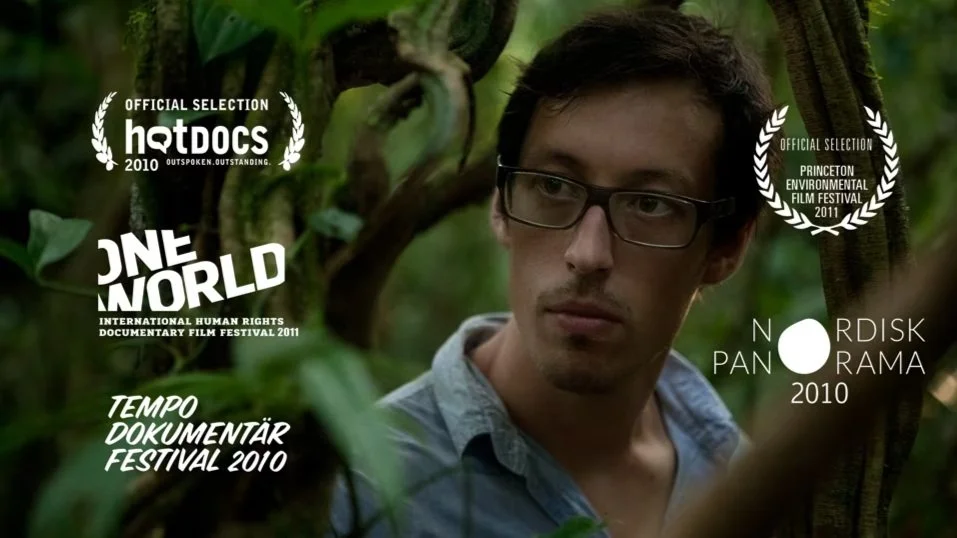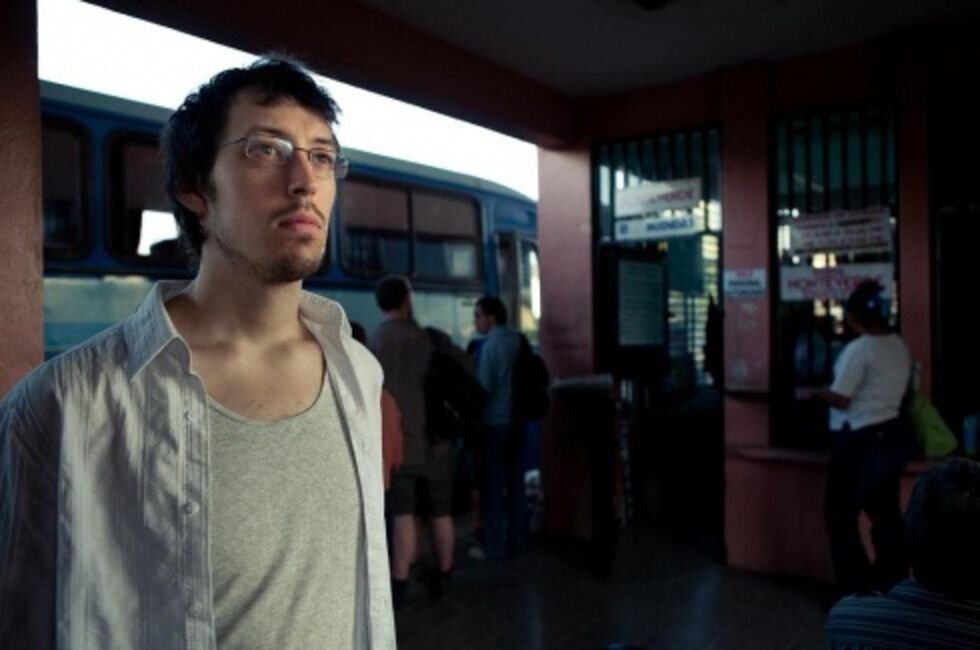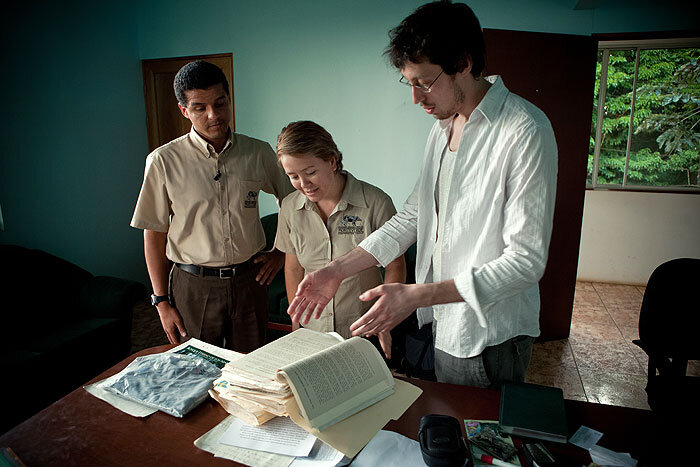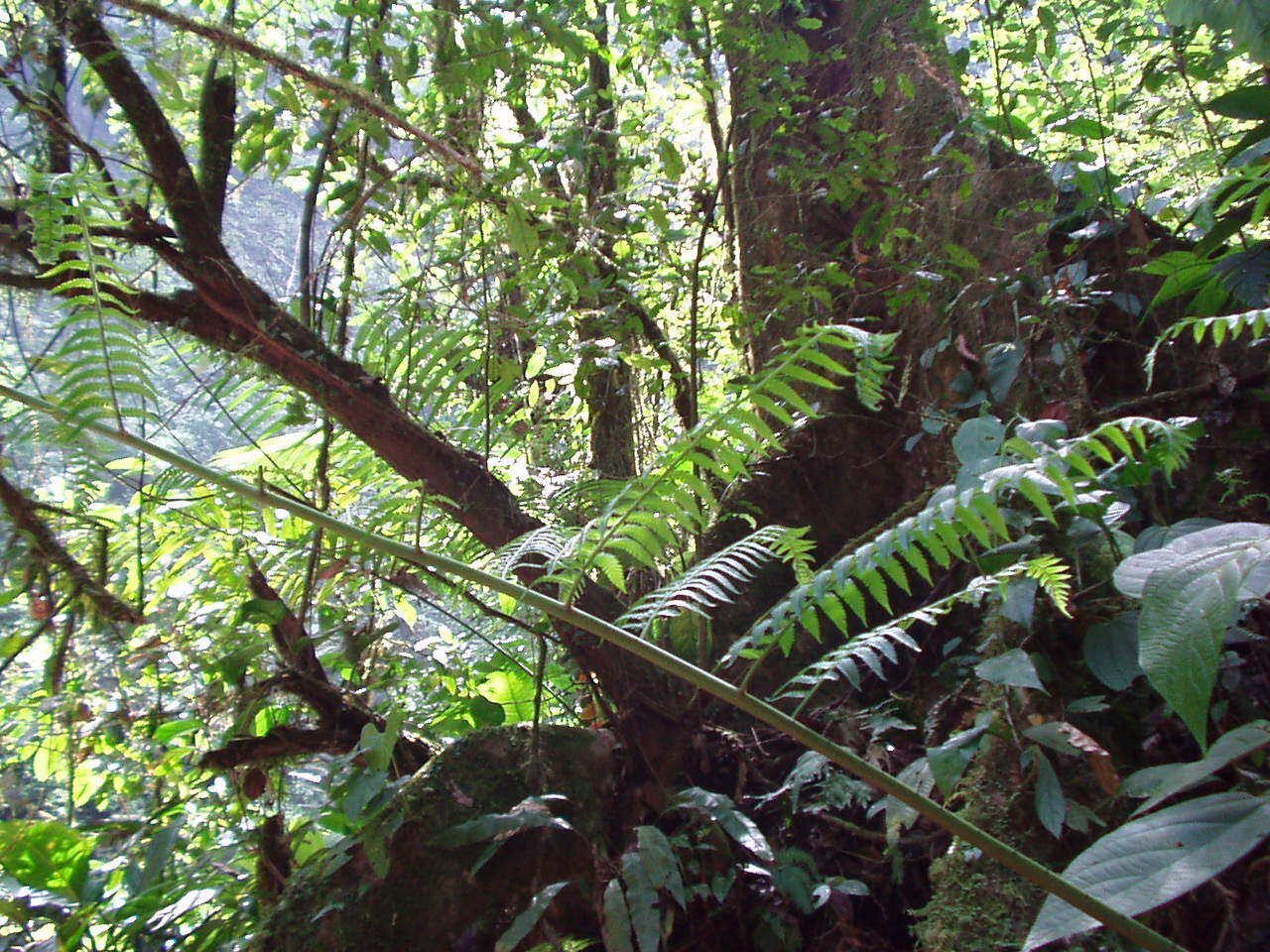ABOUT I BOUGHT A RAINFOREST
Jacob Andrén, an ordinary young man, is thinking back upon his days in primary school. He is wondering about what happened to all those trees that he and his classmates bought after raising money on a flea market. They received a certificate, he recalls. But that was almost 20 years ago. Did their effort really make a difference?
Jacob decides to investigate the case, and he starts looking for the old certificate but it is hard to trace. While searching, he is told that another 400,000 Swedish kids have bought rainforest as well, and even more kids in other countries.
But what defines a rainforest, really? And what threats are they facing today, compared to 20 years ago? And most importantly: Is the forest still there? And in that case: Where? These questions arise, and he wants to find the answers.
Jacob manages to find his old teacher from primary school, who locates his forest in Costa Rica. She tells him that the forest was said to be protected forever, but she is only a teacher and cannot promise him that it is still there. This is when Jacob decides to go tracing his trees.
About the directors
Helena Nygren, A past as a musician, art director and journalist. Since 2002, after studying to be a TV-producer atvNordic documentary school, she works as a filmmaker with her own production company. She has her focus on social and art projects. She’s cooperating with musicians and artists, works as a consultant for several media educations around Sweden and holds lectures in film. She also works as a photographer, journalist and with graphic design.
Jacob Andén has been studying film on Fridhems school of film. His degree project in school won the Pixel festival’s jury price in 2006. After school he moved to Malmö where he started his own production company Accordionfilm. He has directed quite a number of short- commercial and information films and worked as a film teacher.
THREATS
Bad Oil
The African Palms produce high-quality oil and is one of the main mono-crops in Nicaragua. The plantation-process started up in 1982 aimed at boosting the nation’s production. The idea was to incorporate people into a state-run project, with involvement from farmers organized into cooperatives…
Sounds great, doesn’t it?
Today the reality is different. In this film Fidel Martínez Ríos at Fundacion del Rio guides you through the palm oil plantations in Nicaragua.
Medicine
The people on the countryside in Central America has produced their own natural medicines from generation to generation for decades. And it’s all thanks to the forest. Did you know, for example, that headache can be cured by mixing two kinds of leafs together with a zip of “mountain rum”? And compared to traditional western pills the cost is incomparable.
Holy Land
What´s the price you pay for defending the forest and your lands resources? Father Andrés Tamayo Cortez, the leader of the independent organisation MAO, knows. Four times he’s been threatened to his life, and four times he’s been forced to flee his country.
But with God on his side, he and his compañeros continues to put pressure on the government and the wood-companies. But due to his dedication and vast influence he has now been expelled for an unknown future.
Deforestation
Tourism produces more income to the society in Costa Rica than all agriculture and industry put together. The nature, the insects and all the unique vegetation, are the main reasons people travel there. And the warm climate of course.
But right now the remaining forest is melting like snow in a spring wind.
ACT NOW
Barnens Regnskog
Barnens regnskog (Children’s rainforest) is a Swedish non-profit organization, founded by Eha Kern in 1987, that only co-operates with organizations that are well established within the local population and the countries governments. The organization must have specific programs for purchasing of rainforest, working on environmental education among the local population, regional development and afforestation. All purchases of rainforest from private owners must be done voluntary and in full agreement. Residents in the area may stay if they wish. Those who sell their forests are using the money to buy more land or start a small business, which will increase their quality of life. The forest will be registered as a reserve and the local organization becomes legal landowners.
www.barnensregnskog.se
The Area de Conservación Guanacaste (ACG)
The ACG is 120,000 terrestrial hectares and 43,000 marine hectares of permanently conserved, government owned and managed wild lands in northwestern Costa Rica ran by Daniel Janzen. It began in 1971 with the goal of restoring and conserving an entire tropical dry forest ecosystem. Aims of the project: The two primary goals of the ACG from its inception were first to set in place the full scale restoration of an entire dry tropical forest ecosystem, and second to insure that its wildland biodiversity survives into the indefinite future through the integration of the ACG into local, national and international society through non-damaging use. The first goal is now realised to the point where centuries of succession have to run their course, and the second goal is in place, experienced, and generally running about as well as can be expected given the overall political, historical and economic state of Costa Rica.
http://janzen.sas.upenn.edu/saveit.html
Fundación del Rio
Fundación del Rio (The river foundation) is a non-governmental organization working for environmental changes in Nicaragua, on a non-profit basis. It was formed in February 1990 in San Carlos, Nicaragua. Fundación del Rio is the first environmental organization in the Rio San Juan area and currently has offices in the municipalities of San Carlos, San Miguelito and El Castillo.
Among the objectives for Fuandación del Rio are:
-To defense, protect and restore the natural tropical ecosystems of Southeastern Nicaragua.
-To promote and support the validity and effectiveness of the legal framework that guarantees environmental protection and sustainable management of natural resources.
-Encourage the use of alternative technologies with the participation of the population and contribute to the environmental knowledge of the people.
PRODUCTION INFO
Title: I Bought a Rainforest
Genre: Documentary
Release year: 2010
Length: 58 min
CREDITS
Director: Jacob Andrén, Helena Nygren
Producers: Margarete Jangård, Fredrik Gertten
Executive Producer: Fredrik Gertten
Editor: Erik Bäfving, Johan Bjerkner
With support from: The Swedish Film Institute – Johan Bogaeus and the Nordisk Film & TV Fond – Karolina Lidin
FESTIVALS
In selection: HotDocs 2010, Tempo Dokumentärfilmsfestival 2010, Nordisk Panorama 2010, Princeton Environmental Film Festival 2011, BUFF 2010, Stockholm Filmfestival Junior 2010, One World Film Festival Prague 2011, Environmental Film Festival Melbourne 2011




